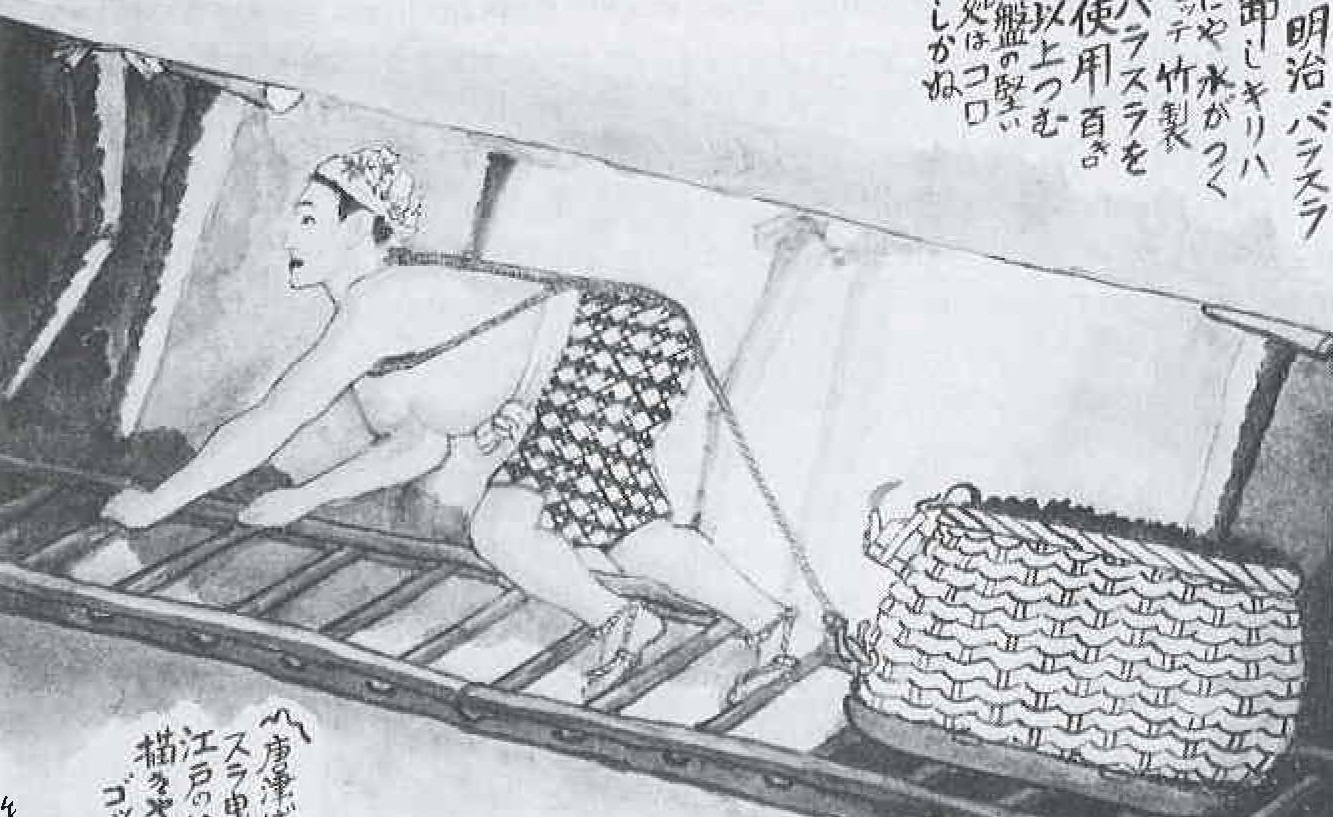Women in Mining in Japan

Women who worked in Japanese underground mining faced a number of workplace challenges. Unequal pay, sexual harassment, and discrimination in job opportunities are no doubt familiar experiences for many women who work in mining around the world today. The situation for these women was doubly harsh, however, due to the conditions of the workplace and the insecurities they faced in their daily lives. They were required to work long shifts with little sleep, working in unsafe and unhealthy cramped spaces, with little or no assistance if they suffered an injury or fell sick. Their husbands who worked alongside them were often abusive and would gamble or drink away the household income. The men rarely assisted with family duties including ensuring there was sufficient food for the children.
W. Donald Burton’s Coal-Mining Women in Japan: Heavy Burdens offers an insight into what it was like to work as a woman in underground mining in Japan in the years between the Meiji restoration (1868) and the beginning of the country’s pre-war mobilization around the third decade of the twentieth century.
In many ways, the work conditions for female miners in Japan were no different from the men; and Burton acknowledges this at the beginning of the final chapter in his book. The female miners were akin to the male miners in the sense that they were part of the working class who shared the same impoverished social positions and the same treacherous physical workspaces. Burton’s book therefore offers a broader view of the mining industry in Japan over a 50 year period. It shows the divide between the power of the mining companies and the workers. The former were regularly supported by the state in their efforts to make profit while avoiding responsibility for accidents and injuries. The latter were forced to buy their own work tools, and were regularly in debt to the mining company that employed them.
For women who worked underground, however, there were additional challenges.
“…the daily work routines of Japanese coal-mining women left them with little, if any surplus time or energy to devote to these pursuits [eating, sleeping, study, entertainment]. On the contrary, those routines were guaranteed to enervate and sooner or later, destroy their bodies … That some survived into their seventies and eighties is a tribute to their hardiness and to the endurance of the women who carried the sena [coal baskets] and tebo [another kind of coal basket] and pulled the sura [sleigh or box filled with coal], all while accepting their family burdens…”
Burton draws extensively on stories told by women to help highlight the difficulties they faced not just as miners, but as female miners.
Biological differences meant that women had to work while menstruating with no access to fresh sanitary materials. There were no private washrooms for any of the miners underground. The heat forced them to work while wearing very few if any clothing. This left the women particularly vulnerable to sexual objectification and abuse.
Social and cultural differences meant the women rarely had any choice about where they could work or the kind of work they could do. They were often forced into working in the mines to pay off family debts. They were also forced to marry men so they could stay in employment. It was regularly the role of the woman to haul the heavy carts of coal out of the mine. A single woman had little chance of securing even this kind of harsh physical work.
After long shifts, sometimes with only a few hours of rest in-between, the women would have to cook for their husbands and look after the children who had been left unattended in a “crèche” near the entrance to the mine. The women tells stories of having to give birth underground. The heat of the mines and the arduous nature of their work often resulted in miscarriages or giving birth to dead babies. As one woman recounted:
“If a baby was born [in the mine], it would be wrapped in a ragged kimono, that’s all. If there was a miscarriage, it was common to put it [the fetus] on some straw sandals or newspapers. Then to go back to work as if nothing had happened.”
Burton’s account is a testimony to the women and their struggles. It is also a lament that they were unable to, and prevented from, translating their strength and resilience into something that could have benefited female workers in more sustainable ways over the long-term.
“…their gratification at having survived, their sense of accomplishment in getting out the coal and raising their children, their satisfaction at not being bested by the working conditions or by their menfolk, and their appreciation of the value of hard work formed the rudimentary basis of what might have become a class consciousness had they been able to benefit from modern organizational and bargaining weapons.”
Burton, W.D. (2014). Coal-Mining Women in Japan: Heavy Burdens. Oxford, Routledge.
Factive wishes to thank Routledge for supplying a review copy of this book.